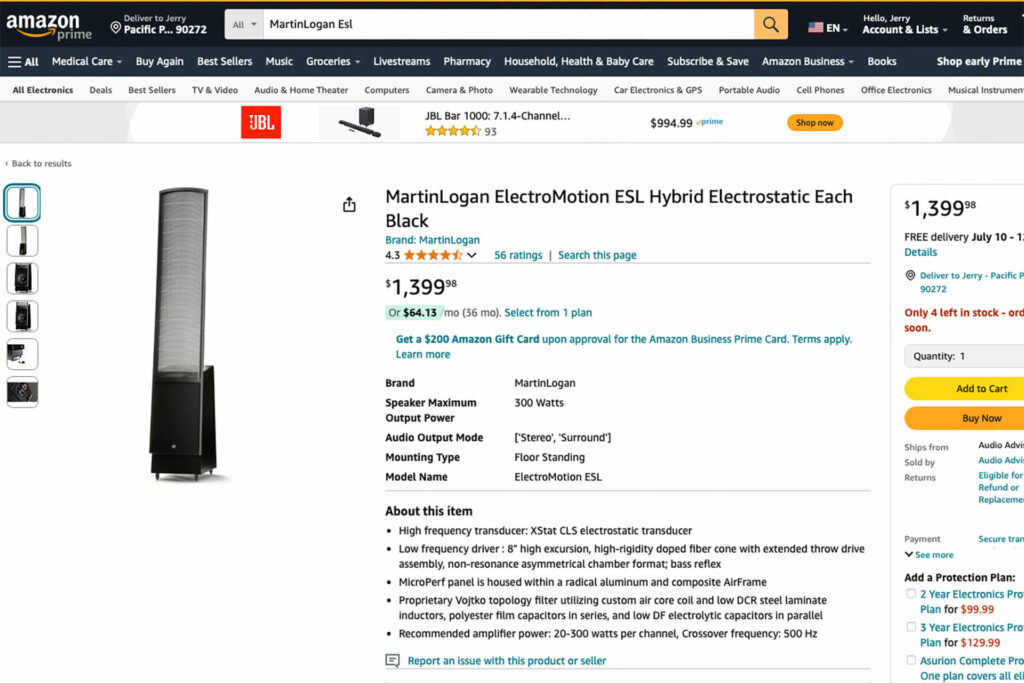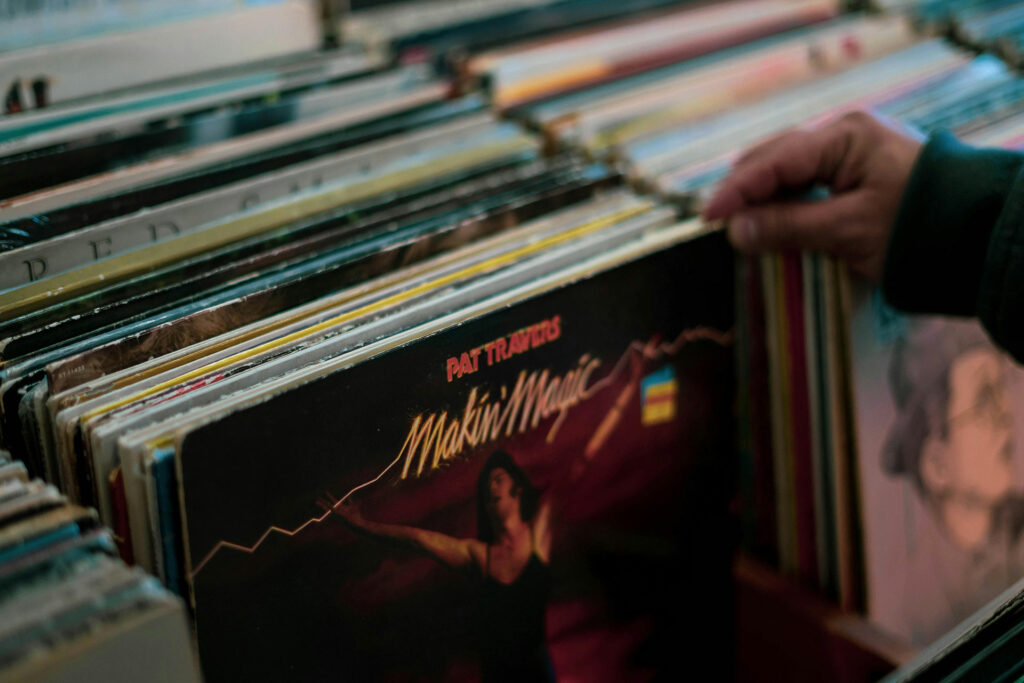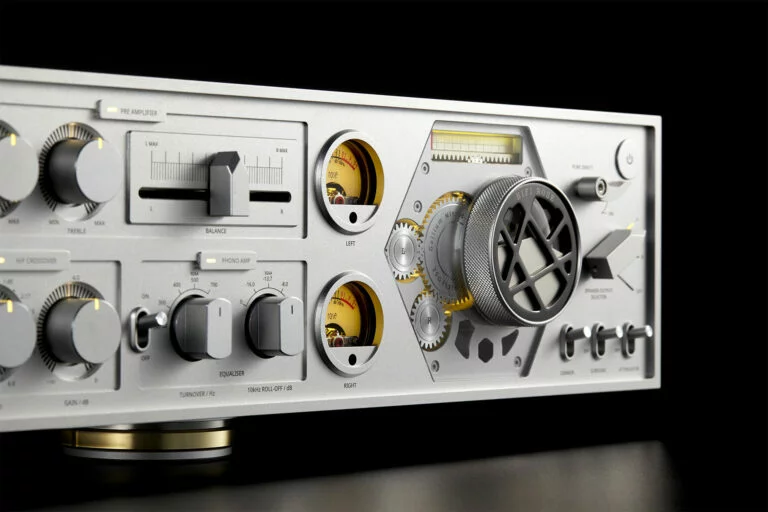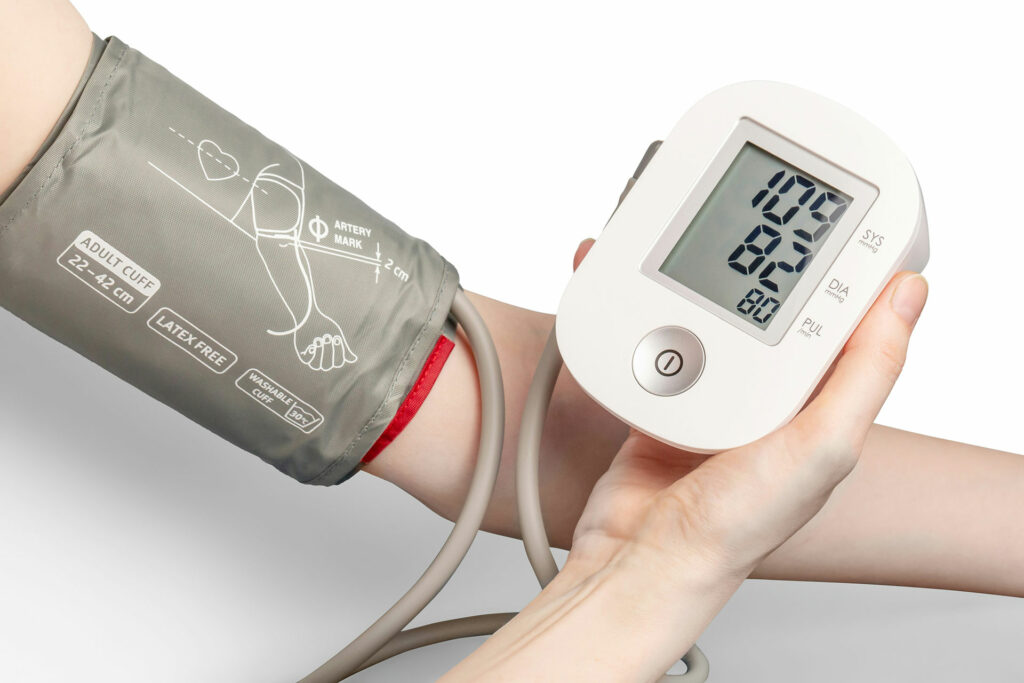One of the founding principles in the Mission Statement of FutureAudiophile.com was to take on the challenge of finding newer, younger and more diverse audiophiles for our hobby. This is no small feat, as I have learned over the past roughly two years. I see why the establishment audiophile print magazines stick with their “change is bad” laser-focus on the same, fast-aging demographic. That’s what they know … that is what they believe. That’s the path more traveled. It just simply isn’t what the hobby needs right now.
If you were talking to people potentially interested in this hobby that has so enthralled us so much over the years, one of the most important arguments that you could make to them about becoming an audiophile is that never in history has there been a better time to own a high-performance music playback system than right now. How can that be, with compounded yearly inflation, supply chain issues causing recent product shortages, and the pending, inevitable (and soon) death of physical media? Allow me to explain …

Today’s New Technology is Driving Better Performance (often) at Lower Prices
Avid readers of FutureAudiophile.com know that we are not the ones pining for the industry glory days, or talking about old audio concepts, when there are so many new technologies to be excited about today. Modern Class-D amps are a total game changer for today’s audiophile, for example. Gallium Nitride power amps (learn more about them here) have almost all of the sound of power-hungry Class-A amps like my beloved Pass Labs XA-25 amplifier, which pulls ALL of the power out of the wall while turning that 750-ish watts-from-the-wall into, like, 30 watts for normal use. Does my Pass Labs amp sound good? You bet it does. Does it create a lot of heat? OMG, yes!!! Really high-end tubes can achieve some similar sonic benefits but, then again, tubes waste 70 percent of the energy from the wall into heat. Tube amps also need maintenance for biasing and tube replacement. Russia isn’t producing tubes in the same volume today, and the best place to get tubes currently is Ukraine, which is under attack by the aforementioned dictatorship, which rightfully has meaningful sanctions imposed on their exported products. None of that matters much to the informed audiophile who is looking at today’s “switching amps” (don’t call them digital amps) and seeing prices for big-watt amps that have that Class-A (or tube-like) performance without the size, heat, energy use and, most importantly, cost. I’ve reviewed under-$3,000 monoblock amps from Orchard Audio that use GaN technology, which are mind-blowing at their price. Orchard isn’t the only one making GaN amps. And GaN amps aren’t the only Class-D power amps changing the game right now. Our client, Buckeye Amps, uses Hypex semiconductors to make really low-cost amps that can compete (and best) more traditional Class-AB amps costing much more money. The AMPED 2400 and one of the Jeff Rowland amps use a Pascal chip for Class-D performance. One is $5,000 for 400 watts, and the other amp is north of $30,000 retail price. Both represent exciting new ways to get huge amounts of power that is clean and accurate right to your speakers, at a price that you can likely actually relate to.

Today’s Audiophiles Don’t Really Need to Collect Music Anymore as Part of the Hobby
Baby Boomer and GenX audiophiles like myself speak of buying and collecting music in the most glowing of terms. The day that Tower Records went out of business right below me, when I lived above the famed Sunset Strip in West Hollywood, was a very, very sad day. What I couldn’t understand then was that the $500 per month (enough for me to lease a mid-sized Mercedes) that I spent on Compact Discs was going to be a total waste one day in the future. That day is today. For less than the cost of one single physical Compact Disc, you can have access to nearly every recording ever made. While the traditional audiophile establishment predictably pivoted their support to 100-year-old vinyl and its very low dynamic range and very high physical-sonic distortion, the reality is that the days of physical media are over. I wrote about the 2022 record music sales according to the RIAA (read my story here). All CDs and LPs combined made up about 8.8 percent of all music sold, and that number isn’t going up. Why should it? You have music, often in HD (think: sonically, basically the exact same as the two-inch master tape, but in a format that you can easily access in your system with a $400 streamer and a simple subscription to a service like QoBuz or Tidal), and you have access to everything.
There is now no risk to finding new music for the curious audiophile or music enthusiast. If somebody tells you as a Led Zeppelin fan that you might like Greta Van Fleet, you can listen at CD (or higher) levels within seconds and as many times as you like, assuming you dig their style.If you want to take meta-data from, say, a music management software platform like Roon and run with it – that is another way to explore music. For example: if you find, say, Philly Joe Jones on a John Coltrane record and then start tracking his work across the Blue Note catalog, you could go on a truly epic tour of some of the best jazz ever recorded. In the old days, you could spend a lifetime (and at least four figures) collecting and paying for that kind of music. Now, audiophiles have it all at their fingertips in increasingly high-resolution formats.
Touching on another formerly problematic audiophile category, in recent years, audiophile DACs have improved radically. Today’s semiconductors used on the digital side of the hobby are much more powerful, but that’s not anything new to those who know Moore’s Law. What’s game-changing is that today’s chips used in modern audiophile DACs are much more easily upgradable. Be it via software or firmware, you can keep your DAC up to bleeding-edge levels of performance without spending a penny. Only a few years ago, you could have spent big money on an audiophile DAC. Then some new, possibly less expensive unit becomes the digital audio flavor of the month, and your investment was lost like some shares of China.com only a few years after its famous IPO in 1999. Those types of losses just don’t happen anymore in the higher-end digital audiophile world.

When Was the Last Time That You Found a Bad Audiophile Component in the Modern Age?
Recently, I was talking to a beloved PR woman in the audiophile industry, and the topic was how negative press in the modern media world gets more user engagement. More user engagement means more ad impressions and, on platforms like YouTube.com, more impressions equals more money. That’s just how things work. Why do you think that Fox News repeatedly lies as they do? It makes money. Why does MSNBC scare the crap out of liberals every night? Because it engages them and they interact. Media is all about making money and going negative is a proven way to make big money.
So, what audiophile components should I take and trash on the pages of FutureAudiophile.com?What are the bad components worthy of trashing? There simply aren’t that many out there, when you sit down to think about it. For example, when I was a kid selling THIEL speakers back in the mid-1990s, Jim’s biggest speakers (our store sold pairs to Janet Jackson, Stevie Ray Vaughn and, most importantly, Andrew “Dice” Clay) were the THIEL CS5s. They were huge, heavy and made of gorgeous wood. The problem was that even a bridged pair of our biggest Mark Levinson monoblock amps weren’t enough power to drive these two-ohm-impedance techno-whores. These speakers were so incredibly brutal to drive, I eventually stopped selling them, as Wilson Audio (our other high-end brand) was the exact opposite in terms of power requirements. Today, most speakers come in at 88 to 90 dB impedance, which is not a hard load to drive. Many more speakers rate much higher, thus are even easier to drive.
Recently, I’ve found some expensive streamers that don’t sound one lick better than products costing half (or less) the price, but it is hard to call said products “bad,” per se. I’ve heard Oligarch-level audio electronics that aren’t one bit better than other expensive and lauded components costing $20,000, $30,000 or more per component. There are some who just believe that more expensive must be better, but are so insecure that they don’t trust their own ears. Don’t be that audiophile. Trust your ears, and always trust your instincts. That’s advice to live by in the audiophile hobby for now and for years to come.
So, when you are wooing a new person into the hobby, don’t forget to tell them that there really aren’t any more bad components, thus making a mistake is basically impossible. Audiophiles today get to pick from a huge list of fantastically-performing gear. It is a no-lose situation, which wasn’t the case 10 or more years ago.
Online Audiophile Retail Has Gotten Better and Better
Yes, many regional and local AV stores have closed, and 60-plus percent of American small businesses are still owned by Baby Boomers, many of whom want to sell. I wrote asking Should You Buy an Audiophile Store? If you are inclined, this isn’t a bad idea. There are passionate but older owners who would sell for pennies on the dollar to a younger and highly enthusiastic new buyer in order to keep the party going.
Even if you are short on a really good local audiophile salon, today’s online retail options are so much better than ever before that we should rejoice. Amazon is perhaps the most improved venue in that more and more rock-solid, A-list audiophile companies sell at least some of their products on the world’s biggest online retail platform. Catalog stores are getting more love, and deservedly so. We just added even more links to products for sale from Crutchfield (that’s our main affiliate partner), and we thank you if/when you ever click one of our links and buy something. We get a few bucks, and that helps pay for the content that we do not (and like 7UP – never will) charge for.
For the companies that sell direct, you see even more tempting offers. SVS offers a 45-day in-home trial. Yes, I could buy some speakers from them, like the KILLER new $5,000 per pair SVS Prime Pinnacle Elevation floorstanding speakers (read my review), but why not get them direct from SVS and have an in-home trial? Other companies offer generous financing. Others have crazy-good trade-in offers.
I mentioned 1999 earlier, and that makes me think of a fateful meeting at the 2000 Consumer Electronics Show when online publishing was very, very new. I had a meeting with some pretty high-ups at Sony, and they wanted me to know (as a dotcom publisher) that there was no way on God’s green Earth that the almighty Sony would EVER sell ANY of their products online. No way. They repeated and repeated their ignorant, corporate, fear-based argument over and over, while I just shook my head in amazement. 15 years later, I remember meeting with Sony at their swanky headquarters in San Diego and showing the head of marketing how much gear my publication was selling for Sony at the time, with no marketing support from them (hint: it was many dozens of products per year – some expensive TVs and projectors). Then I showed them how badly the Sound United brands were beating them in many of the same affiliate categories on my site back then. Sony spent $30,000 right on the spot, because most people now buy gear online. Why? Because it can sometimes be a better, easier, more valuable experience.

Listening to Music Promotes Better Health
Who among us didn’t develop some bad habits during the COVID pandemic lockdown? I sure did. For one, I would sit at home (we all were at home all of the time) watching MSNBC to follow the staggeringly bad news of the day and the mostly mismanaged handling of the situation (think: injecting bleach …), and that got paired with drinking a fistful of vodka for the six o’clock hour.Then that got followed up by another for the seven o’clock hour and sometimes again at eight Pacific Standard Time. Where the hell did I have to go, right? I eventually decided to change that behavior up by stopping drinking (at just over a year right now – no AA, just good willpower) and really bring music playback into my life. I started rebuilding a really good audiophile system for my living room and using it. I now limit my liberal news intake to one hour per day, and have replaced the other hours in my living room often with listening to music.
Listening to music can actually lower your blood pressure, which you can test with a simple $30 cuff from Amazon or CVS. Listening to some chill music (save the drum and bass record or the Rammstein for a different listening session) can also help relieve anxiety and stress. The idea that you buy an audiophile system to impress your buddies died in the late 1970s. Forget what anybody thinks about what kind of audiophile preamp that you own. It doesn’t really matter or define you. What matters is that you feel happy, healthy, safe and engaged. Music can do that for you, and building a really fantastic music playback system can be done at a higher level and for less money than ever before.
Final Thoughts on the State of the Audiophile Union …
Yes, we have a severe demographic problem on our hands with the hobby, but that isn’t going to get solved overnight. And don’t worry – we aren’t giving up on the challenge, either. Collectively, we all have to do our part to promote the benefits of the audiophile hobby to new, younger and tech-savvy folks who might be interested. With the performance up and prices down, there are so many reasons why being an audiophile can be a lifestyle and creative boom in your life. We need to vigorously fight the urge to listen to the audiophile elders who talk about change as a bad thing. They are aging out and don’t know what they are talking about. We’ve made the case for why today is the best day ever to become an audiophile. Now we need to get out and share the news with our potentially like-minded friends. Are you up for the challenge?
Where do you stand on the state of the audiophile hobby? Do you know of any new audiophiles? Why did they become part of the hobby? Share with us in the comments below … We always love to hear from you.




Great article, Jerry! I’ve been getting into the hobby over the last few years a little bit at a time as budget allows, and it’s nice to see someone making the effort to bring more people in.
You got it Steve.
We are putting out more real-world audiophile grade content than any other publication out there right now.
Be sure to sign up for our newsletter and we will email you with our news and reviews 2x per week.
Jerry
Excellent year-end synopsis, Jerry. I’m part of the waning vanguard (?) of boomers creating eco-conscious new-tech (GaN-FET) and purist (solid Ag) products at disruptive prices for a younger demographic who we can teach to REALLY appreciate 2-channel in their homes (when they can afford them, eh?). Keep up the good work!
I always love reading your column becuase its not just about the gear, but the “why”
“Today, most speakers come in at 88 to 90 dB impedance…” That should be SENSITIVITY, not impedance, Jerry!
I always love reading your column because it’s not just about the gear, but the “why” of our hobby. You’re so sociological, I can dig it! I’m a boomer who started in the hobby only 3 years ago, but I’ve got money, at least more than the average young’ns who kinda like the hobby, but can’t as easily afford decent gear. They are often at the house and my demos are jaw-dropping, but none of them really want it bad enough to sacrifice other pursuits, girls, video games, phones, or a thousand other distractions we just didn’t have back in our day. But the other issue, for me, is about being a collector. It’s about being an archivist, a historian, able to retrieve at your fingertips a very special specimen to be examined, perused over, then heard in a ritual-like atmosphere. That’s just me. But I stream too, (Tidal), and you’re absolutely right, with streaming only, I could put together a rig today for a fraction of my initial investment. It’s just that I I’m driven to satisfy the Romantic in me. I’m a Universal Pictures baby: Colin Clive’s lab is what it’s all about! My lair is a honey pot of books, vinyls and CDs. When guests walk into our den and see the rig they are numb, speechless except for the occasional: “Holy sh–t!”.
Yep, we need new blood, but I believe in the classics too. Best Jerry, keep it up!
There’s never been a better time to be a budget audiophile. The advent of inexpensive music streaming, Chinese manfacturing & ChiFi allows anyone to enjoy good sound. I would advise against expensive LPs & vintage gear, there are too many pitfalls unless you’re an expert &, in general, it’s better to buy new gear. The plethora of ChiFi electronics is bewildering however there are online review sites to separate the wheat from the chaff. I have noticed a trend, western designed Chinese manufactured speakers are rising in price (& quality) so search out the few remaining bargains. My experiences on Ebay recently leads me to believe there’s a lot of ‘thrifting’ going on, so be very careful about used gear especially old (>10 year old) electronics & remember shipping heavy items is expensive & risky. The pros & cons of Ebay is really a whole subject in itself. Enjoy!
I have been into audio all my life. I have 6 children and 2 grandchildren, so far. My thoughts on bringing new “blood into the hobby”. There has to be some passion there to be ignited. Although I have been into audio none of my children showed interest. I gave my grandson a system but he was more into gaming and cars. His girlfriend is a music student, she collects LP’s although she doesn’t yet have a system. She has the passion.
I feel anyone who will be an audio enthusiast in a meaningful way has to have the passion. for it. Those with the passion will find their path, not led. I admit the path would be easier to find today then it was when I was young.